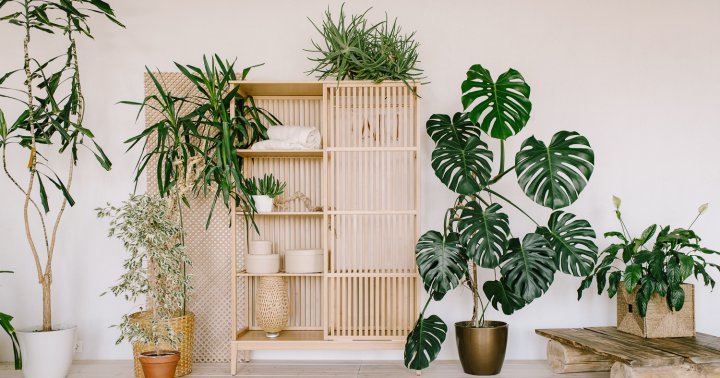An Interview with Tashi Chodron, Himalayan Programs and Communities Ambassador at the Rubin Museum of Art
A Tibetan refugee who moved to the United States in her 20s, Tashi Chodron has been a community leader for decades, bringing people together through her translation work and her career in the arts. Today, she is the Himalayan...
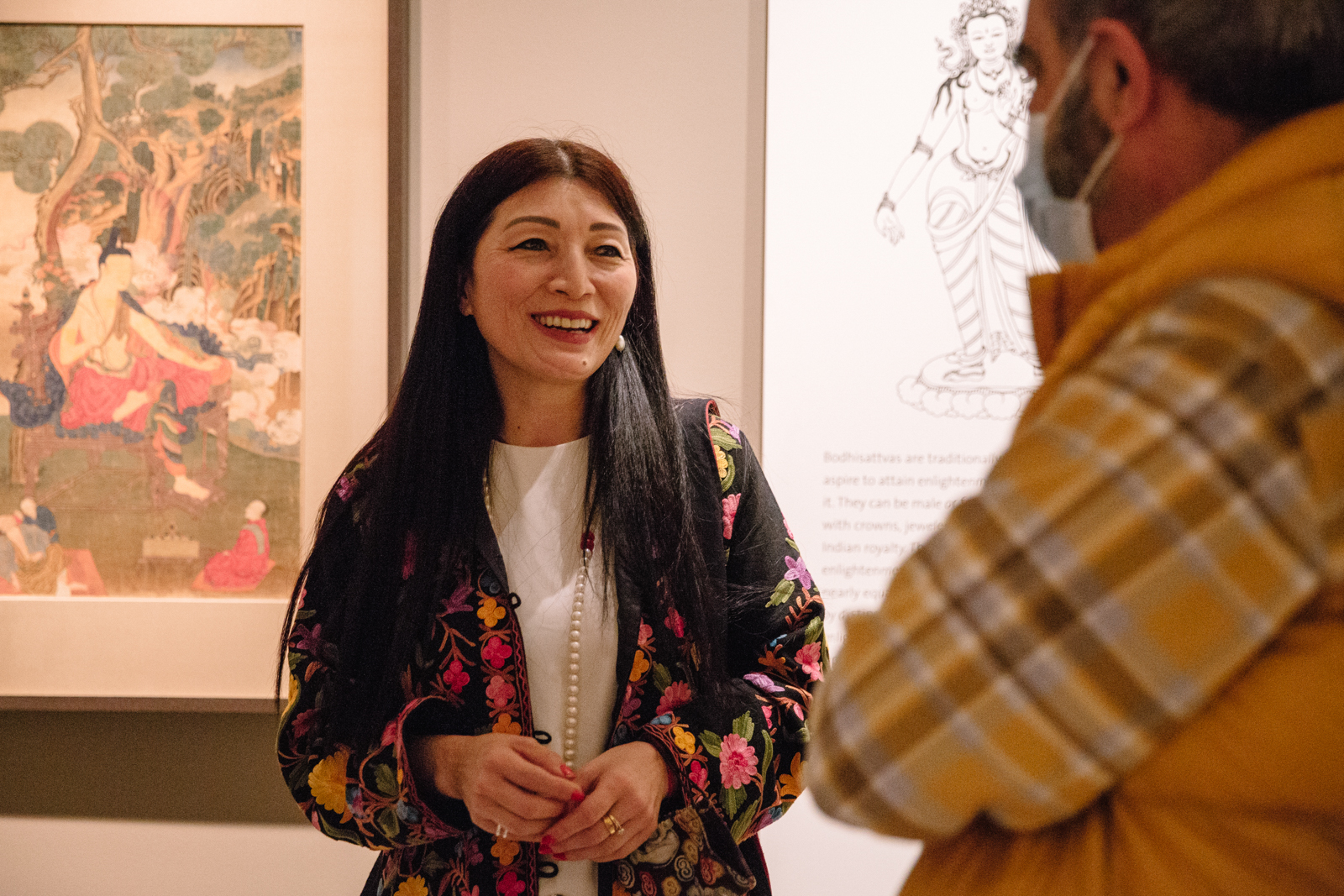
A Tibetan refugee who moved to the United States in her 20s, Tashi Chodron has been a community leader for decades, bringing people together through her translation work and her career in the arts. Today, she is the Himalayan Programs and Communities Ambassador at the Rubin Museum of Art in New York City. Tricycle recently caught up with Chodron to learn more about her background and her work at the museum.
On her experience at the Rubin Museum
I’ve taught a lot of programs [at the Rubin]. There’s a meditation on Saturdays called Awakening Practice in the Tibetan Buddhist shrine room, and I’ve done that for four or five years. I founded Voices of Tibet, where we interviewed Tibetan elders to record their stories. I’m the Himalayan Programs and Communities Ambassador, so I lead all kinds of events around that.
I joke when I give a tour that I feel like part of the antique pieces of the gallery. It opened in 2004, and I joined in 2006. I was invited to lunch with Gene Smith, and realized when I got there that I was also having lunch with Donald Rubin. I told him I had just come from the one-month retreat with my teacher, Penor Rinpoche, and two days later, I got a phone call asking if I’d like to work here as a docent. For a dharma practitioner, a lay practitioner, this is like living in hundreds of monasteries in one place.
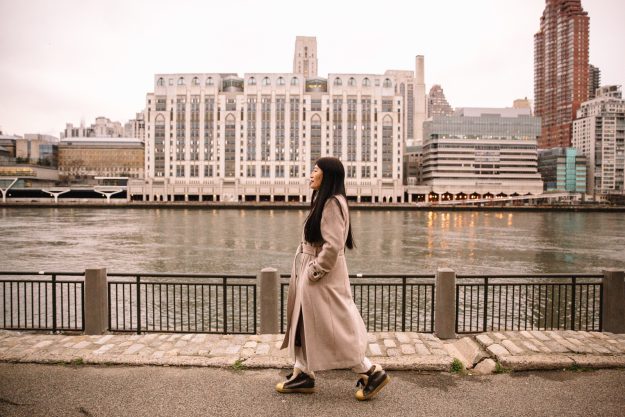
On her work with kids at the museum
[The program I lead is] called Awakening Wisdom Experiences, and it started with my own nieces in San Francisco. When COVID-19 happened and everything shut down, school shut down, and everyone had to spend time together in one little house. So of course there’s so much chaos and problems. So I sent just a three-minute mindfulness meditation to my nieces, which really helped them. They’d send me videos of them meditating. Other dharma families wanted to participate, and so it started to spread from the West Coast to the East Coast. So I have about fifteen kids who I spend time with. They didn’t have any experience in public speaking and were so shy, and the meetings together really boosted their confidence.
[Recording of a student:] Hello, my name is Sarah. I live in Woodside, Queens, New York. Thank you, Rubin Museum, for this opportunity. I have been attending weekly Sunday meditation class by teacher Tashi Chodron. I attend many online classes during the pandemic. But my favorite online class is the meditation class. It is my favorite because our teacher makes it very fun and easy. We learned how to meditate with some elephants. I like meditating with sound. It makes me very calm and feels very peaceful. Also, I learned that Buddha is a male or female for women, and many mantras too. I like saying the Om Mani Padme Hung. It is the mantra of compassion. And I learned why it is important to dedicate the prayers for all beings’ benefit. I also learned in class that, just like myself, everyone is looking for happiness and nobody wants to suffer. So it is very important to be compassionate and pray for everybody’s good. Being able to see my close friends in the meditation class and meditate together was very healing. And meditation taught me to simply pause and look at my breath. And take a few deep breaths in and out.
This became part of the Healing Practices exhibition on the sixth floor at the Rubin. It was a collection of stories from Himalayan Americans.
Teaching these kids really inspired me. The parents would tell me they didn’t have to be so disciplinary. The kids told me when they fought they’d remind each other, “What did teacher Tashi say?” It’s so good.
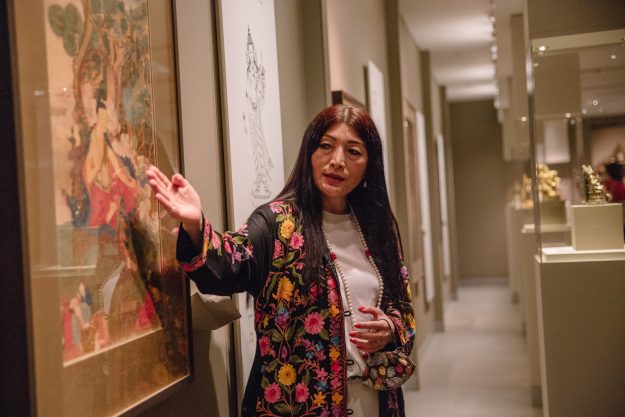
On her Vajrayana Practice
Vajrayana is very esoteric. But one of the key understandings is if you cannot help others, at least do no harm. Because now in the Western world, where everybody is taught to outdo others, to throw the other person under the desk, you don’t have to do that. Do your own job and do whatever you can to help others. Do no harm. When challenges do happen, it actually helps me. It’s testing me. Maybe something you don’t want will happen, but don’t fight and argue. Just understand that this too shall pass.
In terms of the offerings and all that in Vajrayana Buddhism, you do it to collect merit, to collect good karma. And I’ve heard people say, “Oh, that’s so selfish to do that for your own good karma.” But it’s important to understand that when you do these good things, you become a better person because of the good karma. When you are happier, it’s a butterfly effect—your partner, your family, your neighbor—you make everyone happy. It’s not selfish. And merit is accumulated through two methods: one is through this generosity of lighting butter lamps and offering candles and flowers and so forth, and another is doing one’s own practice. When you do these things, the end result that actually matters is that you are giving rise to the wisdom, the true nature, the kindness, the basic goodness that is in each of us. So you’re able to subdue and tame the three poisons—desire, which is clinging, anger, and then the root cause of all these emotions is ignorance. When you’re aware of your true nature, it helps tame these emotions and give rise to the wisdom and the true nature which is in each of us.
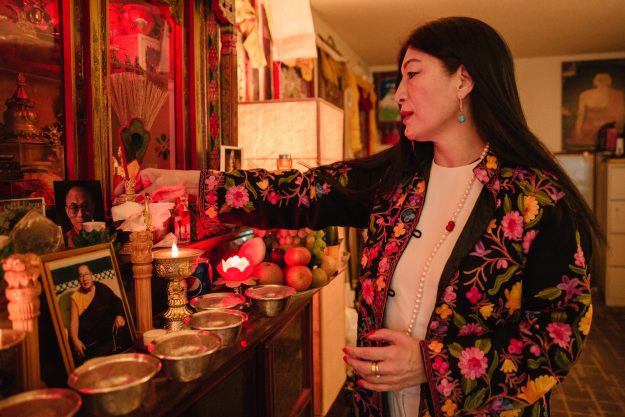

On her teacher
Back in Tibet, everything’s so far away from each other so everyone is in their own little world. But after everyone came into exile in India, it was like a melting pot where Tibetans from the East, West, Central—everybody’s together whether you’re practicing Nyingma or Sakya or Gelug or whatever.
My father was very close to Penor Rinpoche. Penor Rinpoche’s brother, back in Tibet, was one of the guerrillas, and my dad was one of those. My dad and him were like brothers—they say that those brothers are closer than blood brothers. They’re brothers in war. Penor Rinpoche’s brother was one of the not-so-lucky ones who got killed during the resistance. My father was one of the fortunate ones who made it alive and escaped into India.
Before the Tibetans were sent to different cluster sites in India, they were all stationed in the refugee camp. That’s where my mom and dad met. And it was there that Penor Rinpoche said to my father, “Come to South India. If I have a cup of tea, you will have a cup of tea.” So my mother and father moved, and that’s where I was born and raised.
I often say I [was] born at the foot of this amazing monastery. The monastery has four to five thousand monks and nuns.
We were all really fortunate at that camp, because to be a really good teacher, student, and dharma practitioner, it’s really important to have a good teacher. As you know, in Tantrayana, once you take someone as your teacher, then you cannot go against [them]. But Buddha said, you know, you don’t have to treat me as a teacher right away. You can examine a teacher for many years, and the teacher examines students for many years too.
Having a real teacher is so important. Every school of Tibetan Buddhism, when you say “Penor Rinpoche,” they all know. He was often referred to as Mahabodhisatta. I mean, for us just to feed our own mouth is so difficult, and his Holiness has three or four thousand monks and nuns that he gives shelter and a dharma education. Very, very powerful. I’m fortunate to have that deep connection.
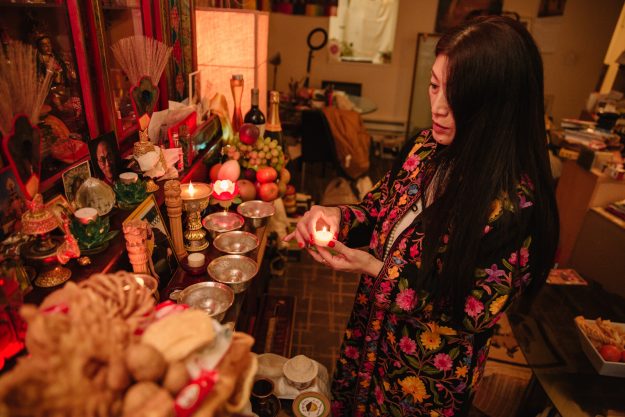
On her childhood and finding Buddhism
I was sent to all these Catholic boarding schools growing up in India. My real studies of Tibetan Buddhism came when I started attending His Holiness’s summer retreats at the Palyul center in upstate New York. He started them in 1997, and my monk brother, who is the lineage holder of the lama dance, travels with Penor Rinpoche along with all the other monks. My brother told me Penor Rinpoche said that no matter what was happening in the other monastery, he would come lead this retreat for the next ten years. So my brother said come and you will receive all the transmissions from His Holiness. So, in 2000, I was able to take off work and come for the whole month. And that was it. It was the best thing I ever did. And Rinpoche speaks in Tibetan and is one of the greatest translators, so I get both! I was totally hooked.
It’s sort of a one-month crash course. Every day there’s a teaching with about 150 students who have come from all over the world to receive these teachings. And hundreds of Himalayan people come on the weekends from Jackson Heights.
Every year [after that], I was able to go. It was so compassionate. And then Holiness left in 2009. When he passed, there was this incredible rainbow over the monastery. It was amazing. There are videos—look it up.
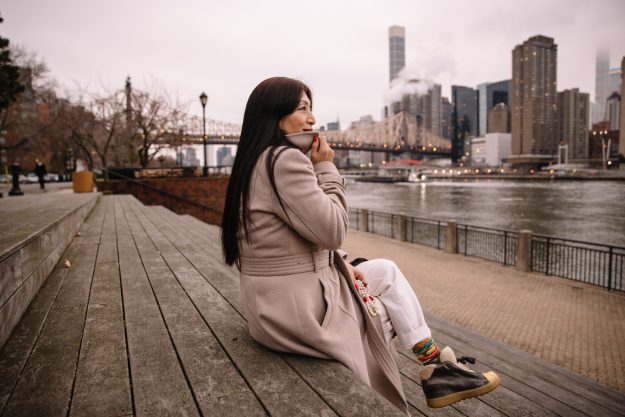

 Fransebas
Fransebas 









